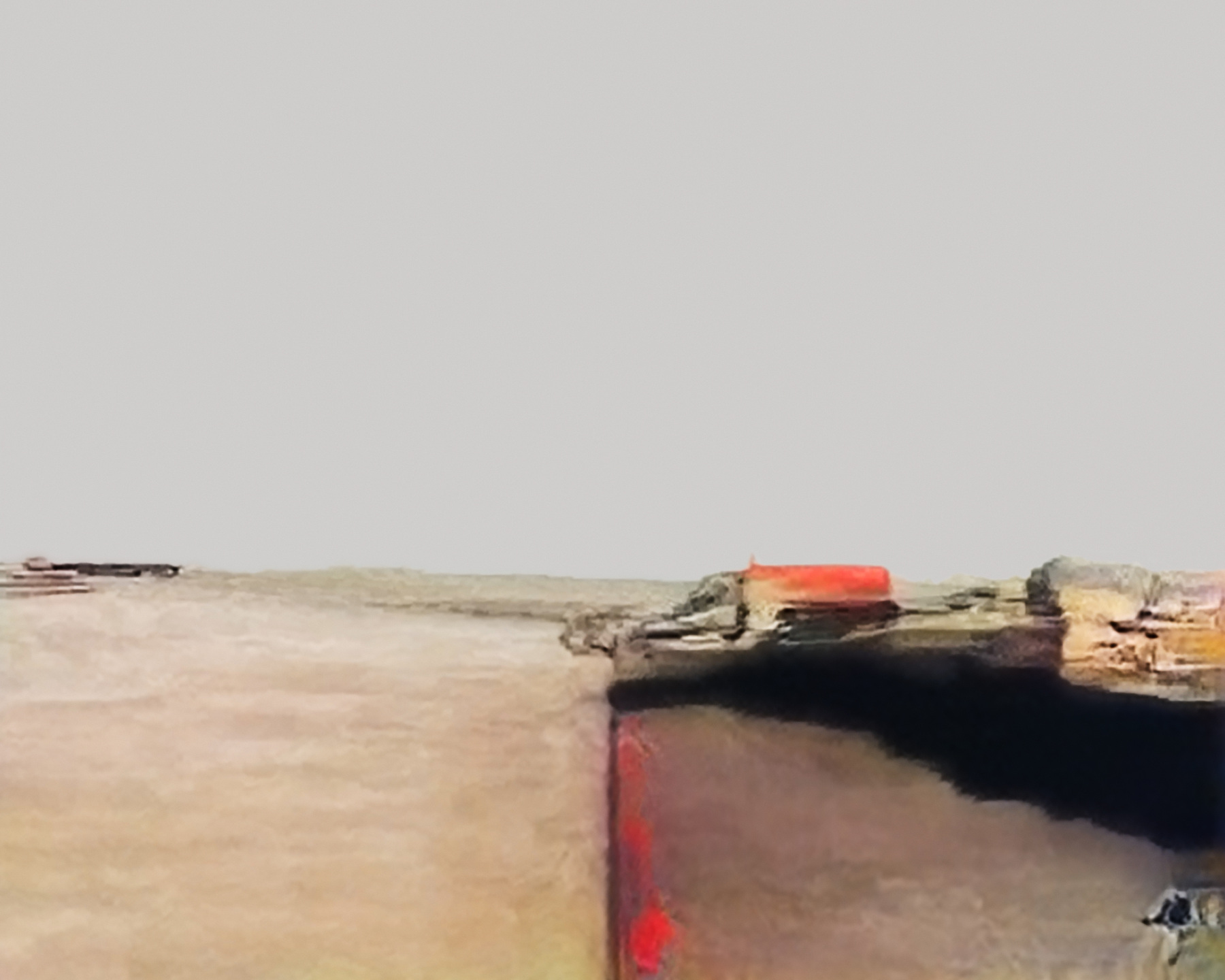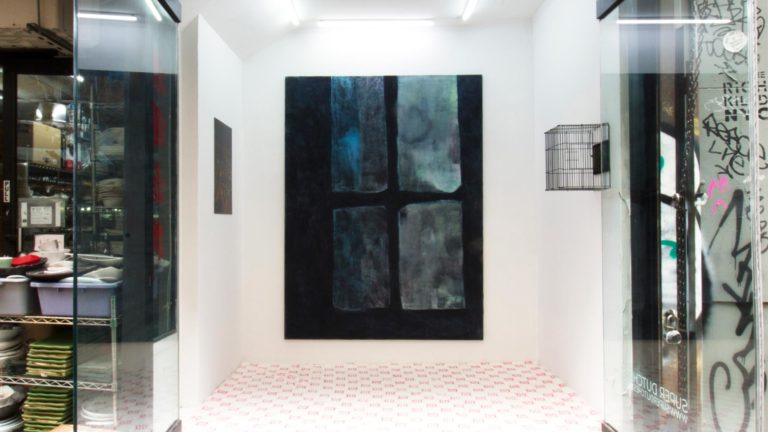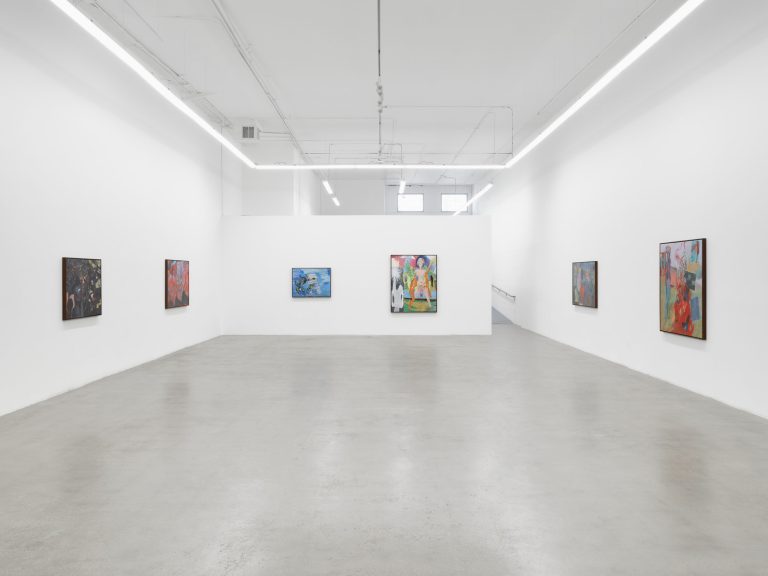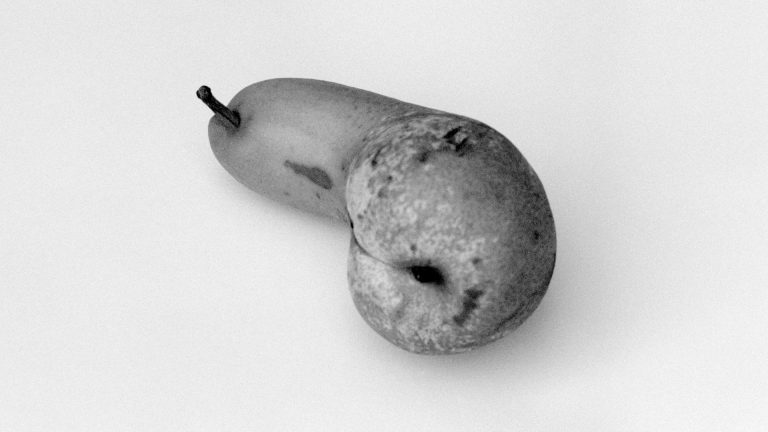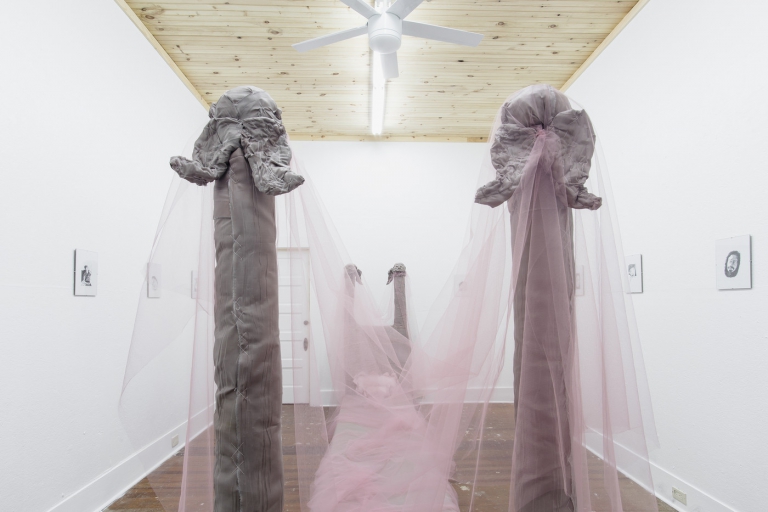Artist: Trevor Paglen
Exhibition title: A Study of Invisible Images
Venue: Metro Pictures, New York, US
Date: September 8 – October 21, 2017
Photography: all images copyright and courtesy of the artist and Metro Pictures
Trevor Paglen will give walk-throughs of the exhibition at 3pm on September 9 and 23. On September 16 at 1pm, he will be joined in discussion by leading computer vision and artificial intelligence researcher and AI Now Initiative co-founder Kate Crawford.
Trevor Paglen’s A Study of Invisible Images is the first exhibition of works to emerge from his ongoing research into computer vision, artificial intelligence (AI) and the changing status of images. This body of work has formed over years of collaboration with software developers and computer scientists and as an artist-in-residence at Stanford University. The resulting prints and moving images reveal a proliferating and otherwise imperceptible category of “invisible images” characteristic of computer vision.
Paglen’s exhibition focuses on three distinct kinds of invisible images: training libraries, machine-readable landscapes and images made by computers for themselves. For Machine-Readable Hito, for example, Paglen took hundreds of images of artist Hito Steyerl and subjected them to various facial recognition algorithms. This portrait of Steyerl presents the images alongside metadata indicating the age, gender, emotional state and other signifiers that the algorithms have interpreted from the images. In another portrait in the show, Paglen trained facial recognition software to read the face of philosopher Frantz Fanon. A ghostly image of Fanon shows the facial signature–the unique qualities of a face as determined by biometric recognition software–used by computer vision to identify an individual.
To make the prints in Adversarially Evolved Hallucinations, Paglen trained an AI to recognize images associated with taxonomies such as omens and portents, monsters, and dreams. A second AI worked in tandem with the first to generate the eerie, beautiful images that speak to the exuberant promises and dark undercurrents characterizing our increasingly automated world.
The video installation Behold These Glorious Times! brings together hundreds of thousands of training images routinely used for standardized computer vision experiments and pairs them with visual representations of an AI learning to recognize the objects, faces, expressions and actions. A loose narrative begins to emerge about the collapsing distinctions between humans, machines and nature. Electronic musician Holly Herndon composed a soundtrack using libraries of voices created to teach AI networks how to recognize speech and other acoustic phenomena.
A Study of Invisible Images builds on Sight Machine, a work staged in San Francisco earlier this year in collaboration with the Kronos Quartet. As the quartet played a concert, cameras attached to computer vision algorithms used in self-driving cars, guided missiles, spy satellites and other autonomous vision systems projected what they “saw” onto a screen behind the musicians.
Paglen has upcoming exhibitions at the Smithsonian American Art Museum and Museo Tamayo in Mexico City. He has had one-person shows at Secession, Vienna; the Berkeley Art Museum; Kunsthall Oslo; and the Frankfurter Kunstverein. His work has been exhibited at the Metropolitan Museum of Art; Tate Modern; San Francisco Museum of Modern Art; BALTIC Centre for Contemporary Art; Museo Reina Sofía, Madrid; MIT List Visual Arts Center; Haus der Kunst, Munich; and the Walker Art Center. He participated in the 2009 Istanbul Biennial, 2012 Liverpool Biennial, 2013 ICP Triennial and the 2016 Gwangju Biennale. He has received numerous awards, including the 2014 Electronic Frontier Foundation Pioneer Award and the 2016 Deutsche Börse Photography Foundation Prize. He has written The Last Pictures, a critical compendium of his Creative Time project to launch an ultra-archival disc micro-etched with one hundred photographs into orbit; Blank Spots on the Map: The Dark Geography of the Pentagon’s Secret World; and I Could Tell You but Then You Would Have to Be Destroyed by Me: Emblems from the Pentagon’s Black World. Paglen’s article “Invisible Images: Your Pictures are Looking at You” about computer vision and artificial intelligence was published by The New Inquiry in December 2016.
Trevor Paglen, A Study of Invisible Images, 2017, exhibition view, Metro Pictures, New York
Trevor Paglen, A Study of Invisible Images, 2017, exhibition view, Metro Pictures, New York
Trevor Paglen, A Study of Invisible Images, 2017, exhibition view, Metro Pictures, New York
Trevor Paglen, A Study of Invisible Images, 2017, exhibition view, Metro Pictures, New York
Trevor Paglen, A Study of Invisible Images, 2017, exhibition view, Metro Pictures, New York
Trevor Paglen, A Study of Invisible Images, 2017, exhibition view, Metro Pictures, New York
Trevor Paglen, A Study of Invisible Images, 2017, exhibition view, Metro Pictures, New York
Trevor Paglen, Megalith, 2017, pigment print, 63 x 72 inches (image), 160 x 182.9 cm, 63 3/8 x 72 1/2 inches (frame), 161 x 184.2 cm
Trevor Paglen, It Began as a Military Experiment, 2017, set of ten pigment prints, glossy finish, 13 5/8 x 10 1/2 inches, 34.6 x 26.7 cm, 14 1/8 x 11 inches (each frame), 35.9 x 27.9 cm
Trevor Paglen, “Fanon” (Even the Dead Are Not Safe) Eigenface, 2017, dye sublimation metal print, 48 x 48 inches (image), 121.9 x 121.9 cm, 49 5/8 x 49 5/8 inches (frame), 126 x 126 cm
Trevor Paglen, Machine Readable Hito, 2017, adhesive wall material, 193 x 55 1/8 inches, 490.2 x 140 cm
Trevor Paglen, Machine Readable Hito, (detail), 2017, adhesive wall material, 193 x 55 1/8 inches, 490.2 x 140 cm
Trevor Paglen, Four Clouds Scale Invariant Feature Transform; Maximally Stable Extremal Regions; Skimage Region Adjacency Graph; Watershed, 2017, quadriptych; each pigment print, 33 x 46 inches (each image), 83.8 x 116.8 cm, 33 7/8 x 46 7/8 inches (each frame), 86 x 119.1 cm
Trevor Paglen, Highway of Death (Corpus: The Aftermath of the First Smart War) Adversarially Evolved Hallucination, 2017, dye sublimation metal print, 32 x 40 inches (image), 81.3 x 101.6 cm, 32 3/4 x 40 3/4 inches (frame), 83.2 x 103.5 cm
Trevor Paglen, Vampire (Corpus: Monsters of Capitalism) Adversarially Evolved Hallucination, 2017, dye sublimation metal print, 60 x 48 inches (image), 152.4 x 121.9 cm, 61 5/8 x 49 1/2 inches (frame), 156.5 x 125.7 cm
Trevor Paglen, Venus Flytrap (Corpus: American Predators) Adversarially Evolved Hallucination, 2017, dye sublimation metal print, 21 1/2 x 26 7/8 inches (image), 54.6 x 68.3 cm, 22 1/4 x 27 5/8 inches (frame), 56.5 x 70.2 cm
Trevor Paglen, A Man (Corpus: The Humans) Adversarially Evolved Hallucination, 2017, dye sublimation metal print, 48 x 60 inches (image), 121.9 x 152.4 cm, 49 5/8 x 61 1/2 inches (frame), 126 x 156.2 cm
Trevor Paglen, Comet (Corpus: Omens and Portents) Adversarially Evolved Hallucination, 2017, dye sublimation metal print, 21 1/2 x 26 7/8 inches (image), 54.6 x 68.3 cm, 22 1/4 x 27 5/8 inches (frame), 56.5 x 70.2 cm
Trevor Paglen, Rainbow (Corpus: Omens and Portents) Adversarially Evolved Hallucination, 2017, dye sublimation metal print, 21 1/2 x 26 7/8 inches (image), 54.6 x 68.3 cm, 22 1/4 x 27 5/8 inches (frame), 56.5 x 70.2 cm















